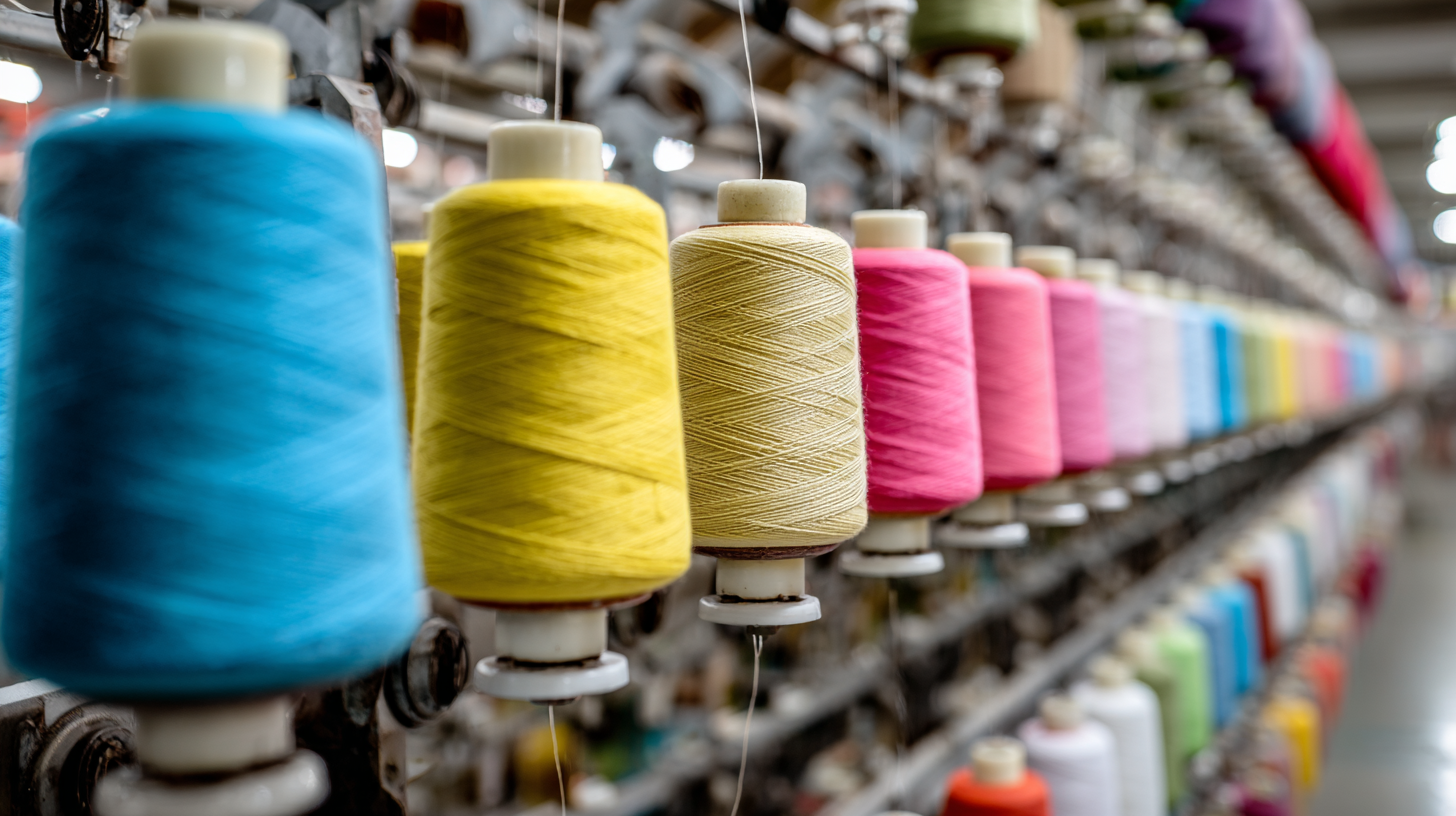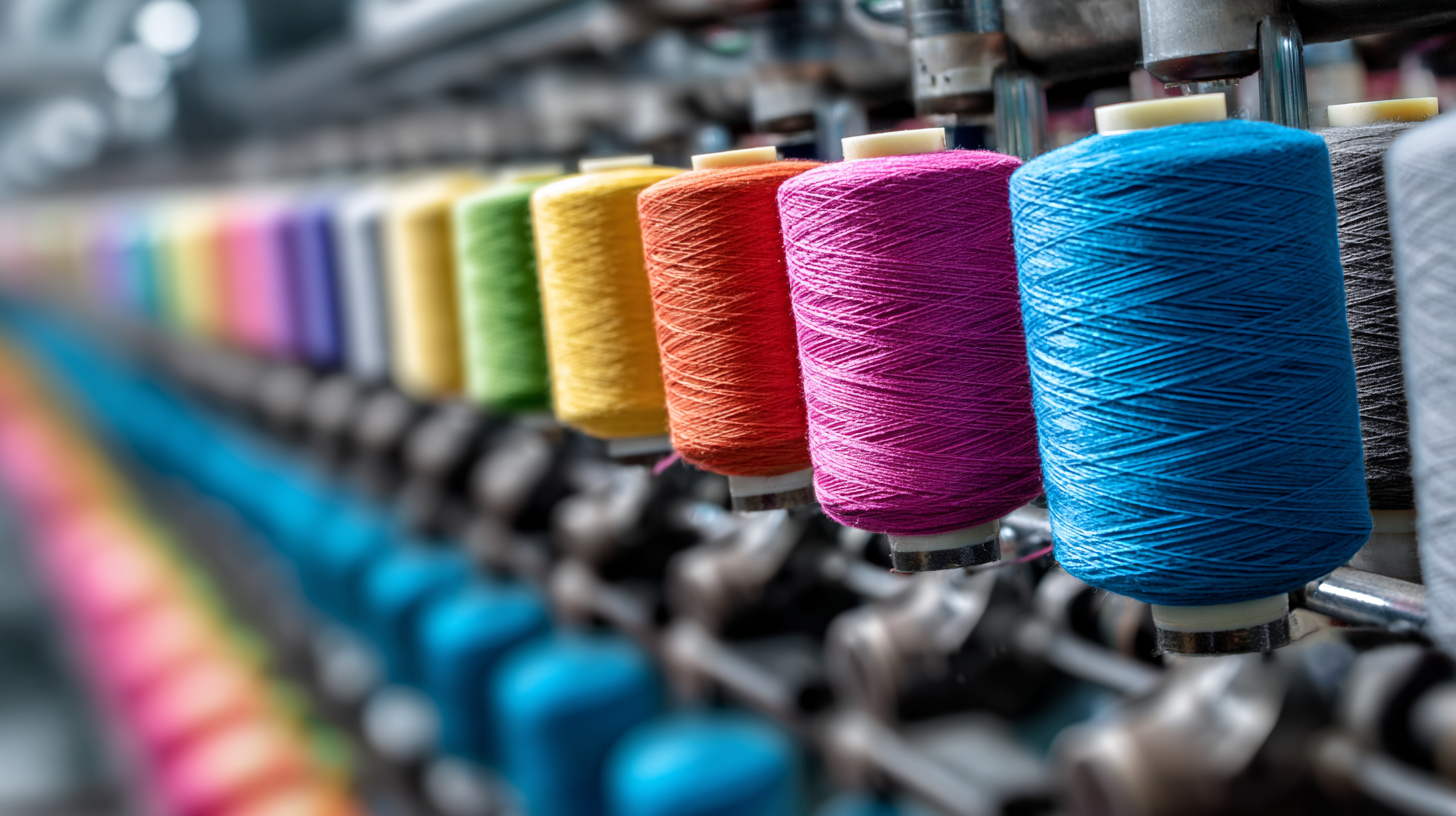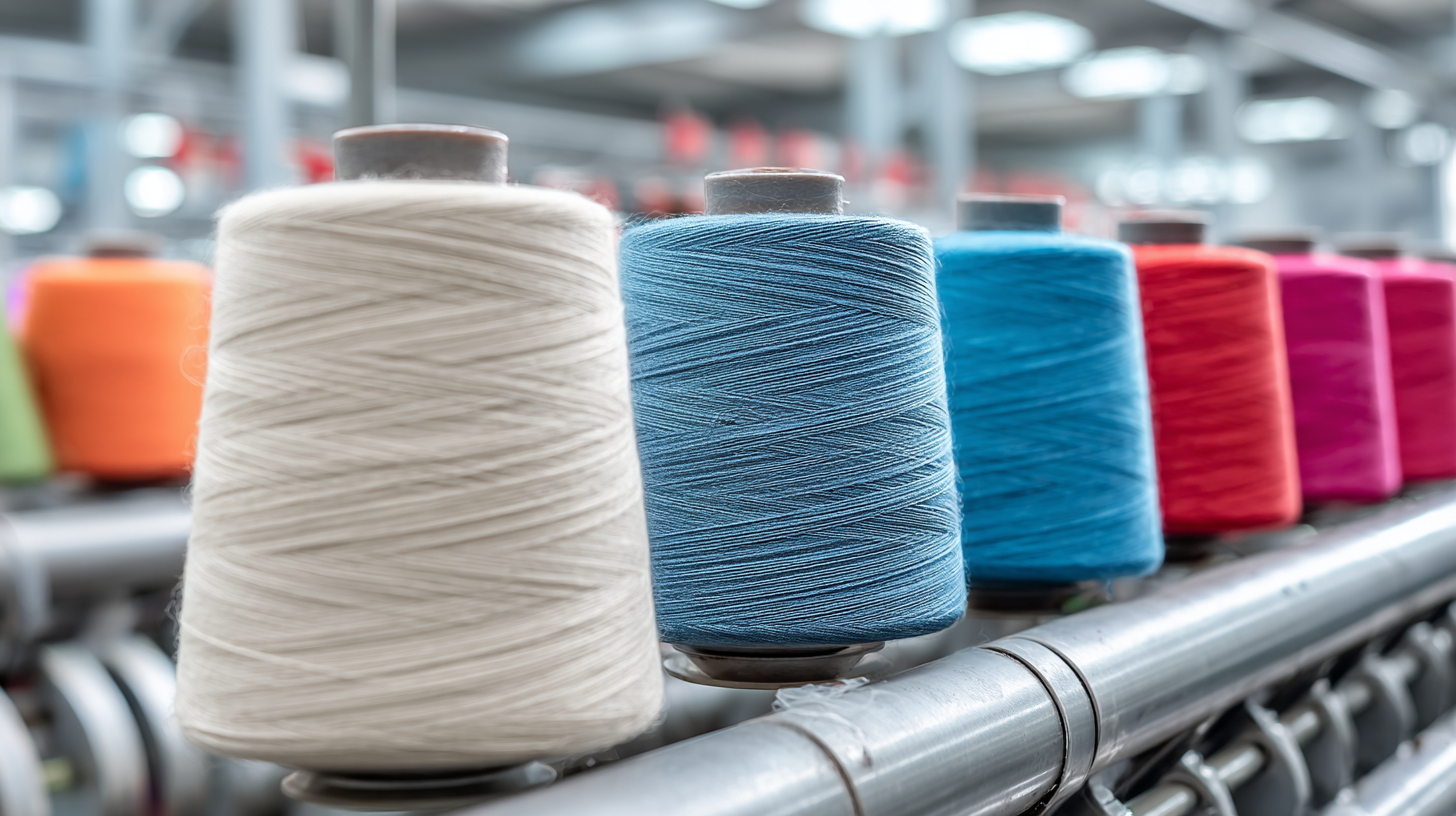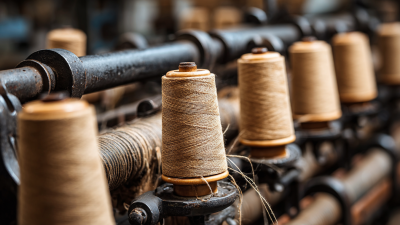What is Open End Spinning? Understanding Its Benefits and Applications in Textile Industry
Open end spinning, a revolutionary technique in the textile industry, has greatly transformed the way we produce fabric and yarn. According to Dr. Emily Carter, a leading expert in textile manufacturing, "Open end spinning not only enhances production efficiency but also allows for greater versatility in fabric characteristics." This innovative method eliminates the traditional spindle, allowing for a more streamlined and rapid process that can cater to a variety of applications, from casual wear to industrial textiles.
The benefits of open end spinning extend beyond mere speed; it also offers significant cost savings and improved sustainability. By reducing waste and utilizing a broader range of fibers, manufacturers can meet the growing demand for eco-friendly products while maintaining high standards of quality. In this context, understanding open end spinning becomes crucial for industry professionals looking to stay ahead in a competitive market. As we delve deeper into the specifics of this technology, we will explore its applications, advantages, and the future it holds for the textile industry.

What is Open End Spinning? An Overview of Technology and Mechanism
 Open end spinning, also known as rotor spinning, is a revolutionary textile manufacturing technique that allows for the production of yarn without the need for the traditional ring spinning process. Utilizing a rotating cup that opens at one end, this method draws fibers through the cup and twists them together, creating a continuous yarn. This technology not only enhances efficiency but also significantly increases production rates. According to a report by Textile World, open end spinning can boost productivity by up to 50% compared to conventional methods, making it a popular choice among manufacturers.
Open end spinning, also known as rotor spinning, is a revolutionary textile manufacturing technique that allows for the production of yarn without the need for the traditional ring spinning process. Utilizing a rotating cup that opens at one end, this method draws fibers through the cup and twists them together, creating a continuous yarn. This technology not only enhances efficiency but also significantly increases production rates. According to a report by Textile World, open end spinning can boost productivity by up to 50% compared to conventional methods, making it a popular choice among manufacturers.
The mechanism behind open end spinning is both innovative and effective. During the spinning process, raw fibers are fed into the rotor, where they are hurled against the inner wall of the cup, creating a yarn structure by twisting the fibers together. This method enables the processing of shorter fibers and a wider range of raw materials, including recycled fibers. A study by the International Textile Manufacturers Federation indicates that open end spun yarns represent approximately 20% of the total yarn production globally, highlighting its growing importance in the textile industry. The adaptability and efficiency of this spinning technique make it an ideal solution for the evolving demands of modern textile applications.
Advantages of Open End Spinning: Enhancing Yarn Quality and Production Efficiency
Open End Spinning, also known as rotor spinning, has emerged as a game changer in the textile industry, particularly due to its significant advantages in enhancing yarn quality and production efficiency. According to a report from The Fiber Year, open end spinning accounts for approximately 18% of global cotton yarn production, highlighting its increasing popularity among manufacturers. One of the key benefits of this method is the ability to produce yarns at a faster rate compared to traditional spinning methods. With production speeds of up to 200 meters per minute, open end spinning can result in a substantial increase in output, allowing manufacturers to meet rising market demands efficiently.
Moreover, the yarn produced through open end spinning boasts superior consistency and strength. Research conducted by the International Cotton Advisory Committee (ICAC) indicates that open end spun yarns can provide increased yarn strength of around 10-20% compared to ring-spun yarns. This enhanced strength translates into improved fabric durability, making it ideal for a variety of applications, including denim and technical textiles. The efficiency and quality benefits of open end spinning contribute to its growing adoption, positioning it as a vital technology in the competitive landscape of the textile industry.

Comparing Open End Spinning and Ring Spinning: Key Differences and Benefits
Open end spinning and ring spinning are two prominent methods in the textile industry, each with its unique characteristics and advantages. Open end spinning, known for its innovative approach, utilizes a rotor to spin fibers into yarn. This process allows for a faster production rate, significantly increasing efficiency. It also doesn't require a continuous fillet as in ring spinning, making it less complex and cost-effective, especially for producing coarser yarns.
On the other hand, ring spinning is the traditional method that involves twisting fibers around a yarn. While it produces finer and stronger yarns, the process is slower and requires more maintenance. Ring spinning allows for a greater variety of yarn types and is often preferred for high-quality, delicate fabrics. Comparing the two, open end spinning excels in producing bulk yarn quickly, making it ideal for applications like denim and home textiles. In contrast, ring spinning remains a go-to for high-end apparel where quality and texture are prioritized. Each method serves distinct purposes, catering to different market needs and product specifications.
What is Open End Spinning? Understanding Its Benefits and Applications in Textile Industry - Comparing Open End Spinning and Ring Spinning: Key Differences and Benefits
| Parameter | Open End Spinning | Ring Spinning |
|---|---|---|
| Production Speed | High (up to 30% faster) | Moderate |
| Yarn Quality | Good but less uniform | Excellent uniformity |
| Cost Efficiency | Lower production costs | Higher operational costs |
| Machine Complexity | Less complex | More complex with more setup |
| Applications | Ideal for low-cost yarns | Ideal for high-quality yarns |
Application of Open End Spinning in Various Textile Products and Markets
Open end spinning, a revolutionary process in the textile industry, has transformed how yarn is produced. This technology simplifies the spinning process by eliminating the need for a spindle, making it more efficient and cost-effective. The application of open end spinning spans various textile products, including denim, terry towels, and knitwear. Its ability to produce thicker yarns quickly has made it a favored choice for manufacturers looking to enhance production rates without compromising on quality.
In addition to its efficiency, open end spinning caters to diverse markets by offering a wide range of yarn options. For instance, in the denim industry, the robust yarn produced through this method is ideal for high-performance fabrics that require durability and strength. Furthermore, its versatility allows for the creation of specialized yarns for sportswear, home textiles, and upholstery, appealing to modern consumer preferences. As sustainability becomes increasingly essential in textiles, open end spinning can also facilitate the use of recycled fibers, aligning with eco-friendly initiatives in the market.
Benefits of Open End Spinning in the Textile Industry
This bar chart illustrates the various benefits of Open End Spinning in the textile industry. Each category represents a key advantage, scored out of 100, to showcase its importance in modern textile production.
Future Trends in Open End Spinning Technology: Innovations and Sustainability in Textiles
The future of open end spinning technology is poised for significant innovations that emphasize sustainability and efficiency in the textile industry. As environmental concerns become increasingly pressing, manufacturers are exploring methods to reduce waste and energy consumption throughout the spinning process. Advanced machinery, utilizing more efficient motors and automated systems, is being developed to enhance production rates while minimizing the carbon footprint. Innovations such as fiber recycling and the use of biodegradable materials are also gaining traction, aligning with the industry's shift towards more sustainable practices.
In addition to these environmental considerations, ongoing research into smart textile technologies is transforming how open end spinning is applied. The integration of IoT and data analytics allows for real-time monitoring of spinning processes, helping manufacturers optimize operations and reduce downtime. As consumers demand higher quality and more customizable products, advancements in open end spinning will enable industries to produce a wider variety of yarns that meet these evolving needs. Emphasizing both technological advancement and sustainability will ultimately drive the future of open end spinning, fostering an industry that is not only efficient but also responsible.


